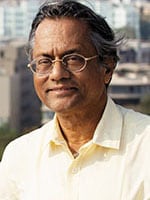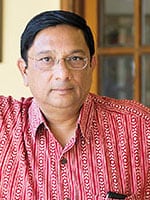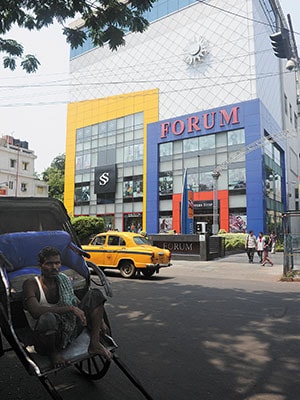
The Changing Faces of Four Cities
Residents across four cities chronicle the transformation that they have witnessed in their neighbourhoods over the last two decades. Some were thrilled with the metamorphosis while others lament the price they had to pay for change
‘I Never Thought People Would Pay Such Exorbitant Rates’

SK Mitra
Age: 67
Designation: Chairman, QSK Advisory
Residence: Lower Parel, Mumbai
I came to Mumbai in 1977 and lived in company-leased accommodation, mostly between Malabar Hill and Altamount Road. About nine years ago, I moved to Phoenix Towers in Lower Parel.
When I started my search for an apartment, a friend [who was a director at a top real estate group] took me to one of their under-construction properties in Parel. It was the early 2000s. The booking price was around Rs 2,000 per sq ft. The building plan was great but the neighbourhood was dirty, roads were depressing, with squatters all around, and there was a railway dump nearby. I had such a poor first impression that I thought it will be difficult to live in such an area.
When I’d almost given up, I found Phoenix Towers. It was one of the first buildings to come up in the extensive mill area. The complex was on the main road, a short distance from the Willingdon Sports Club in Mahalaxmi where I played golf. It was a half-hour’s drive from Nariman Point where my office is located. I bought an apartment here at a base rate of Rs 6,000 per sq ft. (Now that’s over Rs 40,000 per sq ft.)
In the initial four to five years, we were forced to endure noise and dust pollution because of the never-ending and constant construction work in the area. Most of the mills in the neighbourhood were being replaced by high-rises. Prominent buildings such as Palladium, Indiabulls, World One and Marathon came up after I moved in.
I never imagined that this neighbourhood would get developed on such a massive scale; that developers would be able to attract such large-scale investments; that people would buy properties at such exorbitant rates. One of the USPs of Lower Parel, besides its strategic location, is the availability of land. In other parts of Mumbai, archaic [land] laws restrict the tearing down of old, dilapidated buildings.
[Because of High Street Phoenix] there is much activity in the area. There are a variety of eateries and shops. One can walk down to the multiplex next door. People of all ages and income groups come to Phoenix. It has become a melting pot of the city.
However, there is still much dirt and muck around, and that is not going away anytime soon. Not until Indians develop basic civic sense. The main road is narrow and crowded, even with a flyover. The government could have developed Lower Parel along the lines of Canary Wharf in London. That was a mill district, too, but today it is one of the most developed and expensive business and entertainment hubs in the city. There was a chance to develop this area into Mumbai’s new centre of urban excellence, but growth has been chaotic. The area has yet to acquire an identity it can call its own. It cannot compete with either the exclusivity of south Mumbai or the old neighbourhoods of Bandra. Also, Lower Parel is skewed from a structural perspective: It has chawls on one side and high-rises on the other. You don’t find such a disparate set-up elsewhere.
(As told to Sohini Mitter and Kathakali Chanda)
‘It’s Now A Place Where Neighbours Are Strangers’

Anoop Hoon
Age: 58
Designation: President, Century Plyboards
Locality: Bhawanipur, Kolkata
For all practical purposes, I live out of my suitcase. My work demands that I travel nearly every week to different cities in India. When I return to my Heysham Road flat, usually on weekends, I cannot help but marvel at the changing neighbourhood. And I’m nostalgic about the old para (Bangla for neighbourhood), the way things were when I moved into the neighbourhood with my wife and two daughters 15 years ago.
I was lured to the posh Bhawanipur area by the promise of a quiet residential neighbourhood in the heart of the city—just 2 km from Park Street and about the same distance from the lush green Maidan. While my own three-bedroom flat was in an apartment complex, this para had an old-world charm, comprising predominantly Raj-style bungalows with high ceilings and slatted windows. It was so quiet that you’d rarely hear a car honk. Only the chatter of schoolchildren disturbed the peace twice a day.
It changed with the dawn of the millennium and the onset of big construction projects.
In 2003, the Forum Mall, Kolkata’s first such shopping and entertainment complex, opened on Elgin Road, the main road of the locality that runs parallel to Heysham. On the back of it came a number of other commercial ventures and real estate projects. In less than a decade, the neighbourhood has changed from a quiet residential locality to a bustling commercial area. Multi-storeyed buildings housing stores of popular retail brands and fashion designers, coffee shops and car showrooms rose at an alarming speed. Only a handful of the old bungalows remain. One of them is Netaji Bhawan, the protected ancestral house of freedom-fighter Subhas Chandra Bose, ironically facing the Forum Mall.
The building next to our home, housing Kewpie’s—a homely Bengali restaurant run by our neighbours, the Dasguptas—has also withstood the test of time. We have fond memories of eating at Kewpie’s. At the time, it was one of the few neighbourhood places where we could eat out.
Forum Mall opened up an array of entertainment options—big brands, specialty restaurants and a multiplex movie theatre. My wife Anita, a soft-skills trainer, and my daughters Nalini and Mrinalini who are now in Delhi and the US respectively, made the most of living close to Forum. Mrinalini loved to catch the early morning shows followed by a leisurely lunch, for which she often took her mother along.
Property prices have shot up, making many former residents several times richer after they sold their homes and moved out of the neighbourhood. We had bought our 1,800-sq-ft apartment at Rs 2,000 per sq ft. If we were to sell it now—not that I intend to do so—it will fetch at least Rs 10,000 per sq ft. The price of commercial space has skyrocketed to anything between Rs 22,000 and Rs 25,000 per sq ft.
The neighbourhood is no longer an oasis of calm. The lanes leading to Elgin Road are congested most of the time and the constant blaring of car horns is the new normal.
(As told to Anuradha Sharma)
‘We Were Early Settlers In Gurgaon’

Designation: Chairman and Managing Director of Feedback Infrastructure
Age: 55
Residence: Palam Vihar, Gurgaon (Delhi NCR)
I live in the Palam Vihar area of Gurgaon. It is situated at a 3 km inset from the original Maruti factory on what is called the Old Jaipur Road. Our home consists of two independent houses around a garden-cum-courtyard built over an area of 1,100 sq yards [9,900 sq ft].
My wife Rumjhum, daughter Nayantara and I shifted to Palam Vihar in 1991. We were early settlers in Gurgaon. At the time, there were only about 300 families. There were no high-rises; it was a ‘bungalow colony’. There was plenty of space, including farmland. The children sat on tractors while fields were being ploughed. Our house faced wheat and mustard fields, and often while returning at night from office in Delhi, the car headlights would catch neelgai and hare.
There were very few amenities back then. We had to visit Delhi often for most or our needs. And very few Delhi-based friends would visit us because they thought we lived in the Boondocks. But those were enjoyable days. It was a close-knit neighbourhood, almost like a railway colony, or army cantonment. We celebrated festivals as a community. There was no Gurgaon Expressway and MG Road was a sleepy connector.
Palam Vihar started developing fast from the late ’90s. The large open spaces disappeared, and high-rises emerged. Cars jostled for space on narrow lanes. The interaction among community members reduced. I miss that quite a bit. Shops and malls appeared. We have the Ansal Plaza and the Central Market, and we now have theatres, shops and eateries. With its many malls and multiplexes, Gurgaon has become self-sufficient. We no longer have to travel to Delhi for entertainment or to shop. Even the new Airport Terminal T3 has come closer to home.
The other advantage is that our office is a mere 20 minutes away at DLF Cyber City, Gurgaon. Earlier our office used to be at Panchsheel Park and it was an hour’s commute. With the advent of the metro and rapid metro, most of our employees are not unhappy about the office being in Gurgaon.
From a personal investment point of view, Palam Vihar has been rewarding. When we bought the house in 1991, the market rate was around Rs 2,500 per sq yd; now it hovers around Rs 1 lakh per sq yd [Rs 11,111 per sq ft].
I think the one disappointment for Palam Vihar residents is that there is no metro line. The expectation is that a finger of the metro will one day be brought on to this side and that should connect to the airport as well. Also, entry and exit roads leave much to be desired.
(As told to Shabana Hussain)
‘Changes Over The Last Decade Have Been Incredible’

Jagdish and Arundhati Raja
Age: Jagdish (73), Arundhati (64)
Designation: Founders of Jagriti Theatre, Bangalore
Residence: Whitefield
Jagdish Raja: In 1973, we bought three acres of farmland with a three-bedroom house and a poultry shed in Whitefield. The land was covered with aster flowers and it had a barbed-wire fence. Coconut trees lined the border. We bought this parcel of land for Rs 1,50,000. At the time, it was a substantial amount of money. Oh, and I must tell you that the aster flowers on the land were sold six weeks later for Rs 4,000. So, we paid Rs 1,46,000 for the property.
Arundhati Raja: In the ’70s Bangalore was a pensioner’s paradise. The idea of apartments and high-rises were alien to its citizens. Whitefield was a stretch of fields and farms. This area was a coconut grove. We grew mulberry, avocado and ginger on our land. There was only one large family-run general shop called Ahmed Store and a handful of tiny shops.
This place is way out [about 12 miles] from the city, but at the same time it was a 20-minute commute because traffic was non-existent. We would wave out to passers-by as we drove out of Whitefield because we knew most of them.
Development projects began 15 years ago, and the changes we’ve witnessed over the last decade have been incredible. It started with the IT revolution and the International Tech Park (ITPL), which led to social and cultural changes within the neighbourhood.
With the development of luxury-gated communities, people started moving to Whitefield. There was an influx of expats and NRIs. It transformed the residential landscape.
Jagdish: In the current market, the real estate rate in Whitefield is about Rs 5,000-6,000 per sq ft. Ten to twelve years ago, you could have bought a villa in this area for about Rs 50 lakh. Now, a villa goes for anywhere between Rs 3-5 crore. The value of property has gone up 20 times in a span of a decade. I can’t believe it.
Arundhati: In a way, it has allowed the local population to flourish. Earlier a seedy shop across the road, called RMV Wines, would sell locally brewed rum, but now it stocks a range of brands. There are employment opportunities and stable jobs for domestic help.
In the old days, shopping was an expedition. Forum Value Mall has redefined Whitefield’s shopping and entertainment options. We have restaurants, multiplexes and shops all in one place. We visited Value Mall when it first opened its doors. All the longtime residents of Whitefield had also turned up just to take a look. It was fun.
Jagdish: Things happen in God’s good time. On our land, we went for a joint development with the developer. We asked them to build a theatre as part of the deal. We formally launched ‘Jagriti theatre’ in 2011. If we had opened it earlier, we would not have been able to run Jagriti because there were hardly any people. I think we launched it at the right time.
Arundhati: All of us who have been in Bangalore romanticise the past with exclamations such as, ‘Oh no! What has happened to the city?’ But it’s my belief that if this change is happening, you just have to embrace it and go with the flow.
(As told to Debojyoti Ghosh)
(This story appears in the 30 November, -0001 issue of Forbes India. To visit our Archives, click here.)
X








